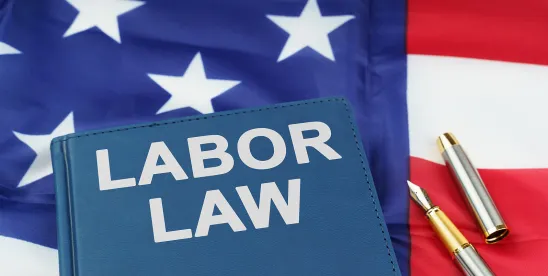On August 19, 2025, the U.S. Court of Appeals for the Fifth Circuit affirmed preliminary injunctions halting National Labor Relations Board (“NLRB” or the “NLRB”) proceedings against SpaceX and two other companies while they litigate the constitutionality of NLRB removal protections. In its holding, the court concluded that the for-cause removal protections—for NLRB Administrative Law Judges (“ALJs”) and Board Members—likely violate Article II of the U.S. Constitution.
Background
As reported here and here, SpaceX is seeking a stay of an NLRB unfair labor practice (“ULP”) charge while litigating the following constitutional claims:
- The NLRB’s structure is unconstitutional because it limits the removal of NLRB Administrative Law Judges (“ALJs”) and Board Members, and permits Board Members to exercise executive, legislative, and judicial power in the same administrative proceeding; and
- The Board’s new expanded remedies violate employers’ Seventh Amendment right to a trial-by-jury.
The two (2) other employers—Energy Transfer and Findhelp—also sought stays of pending NLRB cases against them. Texas District Courts granted preliminary injunctions on all three (3) ULP charges. The NLRB appealed these rulings, and the Fifth Circuit consolidated the appeals.
As reported here, while the Board dropped its opposition to SpaceX’s constitutionality arguments, it still argued that the injunctions—halting the merits of the SpaceX case until the constitutionality arguments are resolved—should be reversed.
Fifth Circuit Decision Upholding Injunctions against NLRB
Likelihood of Success on the Merits
The Fifth Circuit found a likelihood of success on the merits of the constitutional challenge to the removal protections afforded to NLRB ALJs and Board Members, concluding that such protections likely impede presidential oversight in violation of Article II of the Constitution.
- ALJs: Relying on its prior decision in Jarkesy v. SEC,51 F.4th 644 (5th Cir. 2022), the Fifth Circuit affirmed that (i) NLRB ALJs are “inferior officers”; and (ii) the resulting “two layers of for-cause protection” with respect to inferior officers is per se unconstitutional. In concluding that NLRB ALJs were likely inferior officers, the court cited ALJ sanction powers and the finality of ALJ decisions (absent appeal), which provide ALJs with the requisite “substantial authority” over NLRB proceedings.
- NLRB Members: The court similarly found that NLRB Board Members were likely unconstitutionally insulated from presidential removal. The court indicated that Humphrey’s Executor, 295 U.S. 602 (1935)—which upheld removal protections for FTC commissioners—should not be extended to Board Members. The majority reasoned that, unlike FTC commissioners, NLRB Board Members (i) wield substantial executive power through their “administrative, policymaking, and prosecutorial authority” and (ii) lack independence and partisan balance.
Irreparable Harm and Public Interest
The Fifth Circuit also concluded that being subjected to unconstitutional proceedings constitutes irreparable harm, reasoning that the injury arises from the process itself—rather than its outcome. The court also found that the public interest favors compliance with constitutional boundaries and that halting unlawful agency action would not harm the federal government. The injunctions were, therefore, upheld.
Partial Dissent
Judge Jacques Wiener dissented in part, finding that an injunction was inappropriate here because the employers failed to show irreparable harm with respect to the NLRB Board Members’ removal protections. Judge Weiner contended that Collins v. Yellen, 594 U.S. 220 (2021),requires a showing of causal harm beyond the existence of unconstitutional removal provisions to permit an injunction. As a result, Judge Weiner warned that the majority’s holding both departs from Supreme Court precedent and creates a circuit split.
Takeaways
While the final determination of the constitutionality issues concerning the removal protections afforded NLRB ALJs and Board Members remains open, the Fifth Circuit’s affirmance of the lower courts’ injunctions—particularly with respect to its finding of likelihood of success on the merits—could foreshadow that the U.S. Supreme Court may be receptive to the employers’ arguments here.
Indeed, this dispute appears destined for resolution by the U.S. Supreme Court—through an appeal of this decision, other employer challenges, and/or the ongoing litigation over Member Wilcox’s firing—and will have implications for the tenure of NLRB Board Members and ALJs, as well as the composition of the NLRB, with President Trump’s recent nomination of two (2) new Board Members.
As always, we will continue to update you on these NLRB developments.



 />i
/>i

